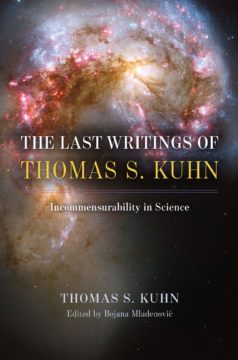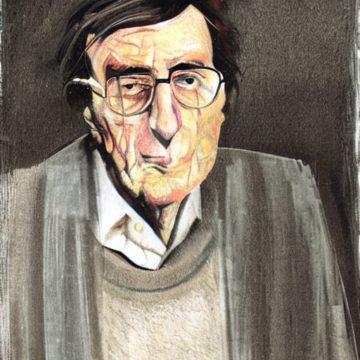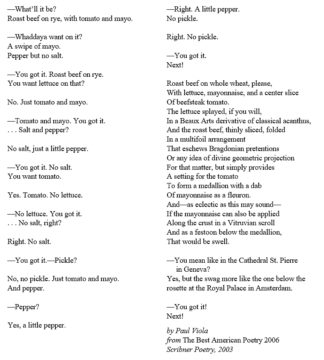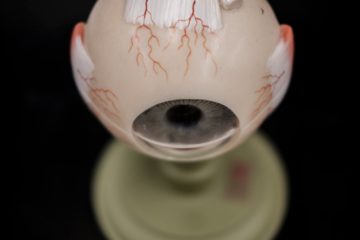The Week Staff at Yahoo:


More here.
Maureen Dowd in The New York Times:
 WASHINGTON — It’s not a pretty sight when pols lose power. They wilt, they crumple, they cling to the vestiges, they mourn their vanished entourage and perks. How can their day in the sun be over? One minute they’re running the world and the next, they’re in the room where it doesn’t happen.
WASHINGTON — It’s not a pretty sight when pols lose power. They wilt, they crumple, they cling to the vestiges, they mourn their vanished entourage and perks. How can their day in the sun be over? One minute they’re running the world and the next, they’re in the room where it doesn’t happen.
Donald Trump was so freaked out at losing power that he was willing to destroy the country to keep it. I went to lunch with Nancy Pelosi at the Four Seasons to find out how she was faring, now that she has gone from being one of the most powerful women in the world — second in line to the presidency — and one of the most formidable speakers in American history to a mere House backbencher.
I was expecting King Lear, howling at the storm, but I found Gene Kelly, singing in the rain. Pelosi was not crying in her soup. She was basking as she scarfed down French fries, a truffle-butter roll and chocolate-covered macadamia nuts — all before the main course. She was literally in the pink, ablaze in a hot-pink pantsuit and matching Jimmy Choo stilettos, shooting the breeze about Broadway, music and sports. Showing off her four-inch heels, the 82-year-old said, “I highly recommend suede because it’s like a bedroom slipper.”
More here.
We wouldn’t write this,
wouldn’t even think of it. We are working
people without time on our hands. In the old country,
we milk cows or deliver the mail or leave,
scattering to South Africa, Connecticut, Missouri,
and finally California for the Gold Rush—
Aaron and Lena run the Yosemite campground, general
store, a section of the stagecoach line. Morris comes
later, after the earthquake, finds two irons
and a board in the rubble of San Francisco.
Plenty of prostitutes need their dresses pressed, enough
to earn him the cash to open a haberdashery and marry
Sadie—we all have stories, yes, but we’re not thinking
stories. We have work to do, and a dozen children. They’ll
go on to pound nails and write up deals. Not musings.
We document transactions. Our diaries record
temperatures, landmarks, symptoms. We
do not write our dreams. We place another order.
make the next delivery, save the next
dollar, give another generation—you,
maybe—the luxury of time
to write about us.
by Krista Benjamin
from The Best American Poetry 2006
Scribner Poetry, 2006
 Paul Dicken in LA Review of Books:
Paul Dicken in LA Review of Books:
DELIVERING THE SHEARMAN Memorial Lectures at University College, London, in November 1987, Thomas Kuhn reflected on the moment that launched his philosophical career. He had been a graduate student at the time, preparing the obligatory freshman survey course in the history of science, and trying to understand how anyone ever accepted Aristotelian physics. Kuhn vividly recalls gazing out of his window for some time before suddenly grasping that Aristotle had meant something very different by “motion” from his Newtonian successors. Aristotle’s notion was broader: it encompassed how an acorn grows into an oak, or how the healthy decline into sickness, rather than just how physical objects move from one location to another. Many of the apparent absurdities of his theory — the impossibility of a projectile continuing to move once released from its source — were actually the result of reading contemporary concepts of motion back into his text. It was essentially a problem of translation: of not being able to think oneself into an entirely different world, and not simply a problem of trying to capture the nuance of the original Greek. Put simply, two different eras could not be expected to carve nature along the same joints.
Kuhn’s insight would overturn how we think about scientific progress. The traditional model had assumed a steady process of conjecture and refutation, beginning from a body of self-evident observations (the stone drops, this iron rusts, that raven is black) from which we infer universal generalizations; ongoing tweaks then further refine the theory for the purposes of ever better predictive accuracy.
More here.
 Merve Emre in The New Yorker:
Merve Emre in The New Yorker:
If the character sketches that the English satirist Samuel Butler wrote in the mid-seventeenth century—among them “A Degenerate Noble,” “A Huffing Courtier,” “A Small Poet,” and “A Romance Writer”—the most recognizable today is “A Modern Critic.” He is a contemptible creature: a tyrant, a pedant, a crackpot, and a snob; “a very ungentle Reader”; “a Corrector of the Press gratis”; “a Committee-Man in the Commonwealth of letters”; “a Mountebank, that is always quacking of the infirm and diseased Parts of Books.” He judges, and, if authors are to be believed, he judges poorly. He praises without discernment. He invents faults when he cannot find any. Beholden to no authority, obeying nothing but the mysterious stirrings of his heart and his mind, he hands out dunce caps and placards insolently and with more than a little glee. Authors may complain to their friends, but they have no recourse. The critic’s word is law.
Butler’s sketch would still strike a chord with aggrieved writers today, but, in his time, the Modern Critic—part mountebank, part magician—was a new phenomenon. The figure’s shape-shifting in the centuries since is the subject of John Guillory’s new book, “Professing Criticism” (Chicago), an erudite and occasionally biting series of essays on “the organization of literary study.” Guillory has spent much of his career explaining how works of literature are enjoyed, assessed, interpreted, and taught; he is best known for his landmark work, “Cultural Capital” (1993), which showed how literary evaluation draws authority from the institutions—principally universities—within which it is practiced. To suggest, for instance, that minor poets were superior to major ones, as T. S. Eliot did, or that the best modernist poetry was inferior to the best modernist prose, as Harold Bloom did, meant little unless these judgments could be made to stick—that is, unless there were mechanisms for transmitting these judgments to other readers. (Full disclosure: I have written an introduction to a forthcoming thirtieth-anniversary edition of the book.)
More here.
 Justin Vassallo in Phenomenal World:
Justin Vassallo in Phenomenal World:
Few scholars have done more to elucidate the relationship between democracy and economic development in the United States and its corresponding regional—or “sectional”—antagonisms than Richard Franklin Bensel, the Gary S. Davis professor of government at Cornell University. Among Bensel’s published works are Sectionalism and American Political Development, 1880-1980 (1984), Yankee Leviathan: The Origins of Central State Authority in America, 1859-1877 (1990), and The Political Economy of American Industrialization, 1877-1900 (2000), all of which introduce key arguments about the course of US political economy that remain critical to understanding the evolution of the two-party system and its cross-class coalitions.
The first book measures key moments of “sectional stress” between the industrial core of the United States and the parts of the country that were traditionally agrarian and underdeveloped before the postwar decades. In his treatment of the House of Representatives as an institution which primarily represents “trade delegations,” Bensel demonstrates that a fundamental core-periphery dynamic persisted over the course of the twentieth century even as the South industrialized and the geographic poles of the Republican and Democratic parties reversed. In particular, he tracks the rise and fall of the Democratic Party’s bipolar coalition and the party’s deepening support for the most economically advanced regions of the US, anticipating today’s polarization between large, prosperous metropolitan areas and rural and peri-urban counties.
More here.
 Alyssa Battistoni in Sidecar:
Alyssa Battistoni in Sidecar:
When the multi-hyphenate scholar of science Bruno Latour died last October at the age of 75, tributes poured in from all corners of academia and many beyond. In the aughts, Latour had been a ubiquitous reference point for Anglophone social and cultural theory, standing alongside Judith Butler and Michel Foucault on the list of most cited academics in fields ranging from geography to art history. Made notorious by the ‘Science Wars’ of the 1990s, he reinvented himself as a climate scholar and public intellectual in the last two decades of his life. Yet amidst the expressions of appreciation and grief, many on the left shrugged. Latour’s relationship to the left had long been fraught, if not entirely unsatisfactory to either: Latour enjoyed antagonizing the left; in turn, many leftists loved to hate Latour. His ascendance in the politically bleak years of the early twenty-first century was to many damning. And yet as he sought to respond to the political challenge of climate change in his final years, he turned, in his own deeply idiosyncratic way, to consider questions of production and class; transformation and struggle.
Latour was candid about his own background, readily acknowledging he hailed from the ‘typical French provincial bourgeoisie’. Born in 1947 in Beaune, Latour was the eighth child of a well-known Catholic winemaking family – proprietors of Maison Louis Latour, known for their Grand Cru Burgundys. With his older brother already slated to take over the family business, Latour was sent to Lycée Saint-Louis-de-Gonzague, a selective Jesuit private school in Paris. A leading placement in the agrégation led to a doctorate in theology from the Université de Tours. Twenty-one in 1968, Latour could be found not in the streets of Paris but the lecture halls of Dijon, where he studied biblical exegesis with the scholar and former Catholic priest André Malet. He wrote his dissertation on Charles Péguy, while working in the French civilian service in Abidjan, then capital of Côte d’Ivoire. There he was charged with conducting a survey on the ‘ideology of competence’ for a French development agency seeking to understand the absence of Ivoirians from managerial roles, while reading Anti-Oedipus by night. (‘Deleuze is in my bones’, he would later claim.)
More here.
Michael Jeffries in The New York Times:
 Born at the turn of the 19th century, the Grimke sisters, Angelina and Sarah, left their slaveholding family in Charleston, S.C., as young adults and made new lives for themselves as abolitionists in the North. In 1838, Angelina became the first woman to speak before a legislative body in the United States when she addressed the Massachusetts Legislature and called for an immediate end to slavery. In the same speech, she made a passionate case for women’s rights, insisting that women belonged at the center of major political debates. “Are we aliens because we are women?” she asked. “Are we bereft of citizenship because we are the mothers, wives and daughters of a mighty people?”
Born at the turn of the 19th century, the Grimke sisters, Angelina and Sarah, left their slaveholding family in Charleston, S.C., as young adults and made new lives for themselves as abolitionists in the North. In 1838, Angelina became the first woman to speak before a legislative body in the United States when she addressed the Massachusetts Legislature and called for an immediate end to slavery. In the same speech, she made a passionate case for women’s rights, insisting that women belonged at the center of major political debates. “Are we aliens because we are women?” she asked. “Are we bereft of citizenship because we are the mothers, wives and daughters of a mighty people?”
The Grimke sisters became celebrities, publishing essays that shaped abolitionist thinking and reluctantly stepping into a male-dominated public sphere where they were never completely welcome. Their fame derived from both their words and their deeds. They rejected their white inheritance by coming north and joining the movement, gaining moral credibility that few of their peers could match. But in her new book, “The Grimkes: The Legacy of Slavery in an American Family,” the historian Kerri Greenidge challenges this narrative, showing that the sisters’ contributions to abolition and women’s rights were undergirded by the privileges they reaped from slavery. The lives they built, and their relationships with Black relatives, were poisoned by the profits, violence and shame of white supremacy.
More here.
Emily Stewart in Vox:
 This is not a thing anymore.
This is not a thing anymore.
That’s how Josh Brown, market commentator and CEO of Ritholtz Wealth Management, responded when I told him I was writing about meme stocks in the fall of 2022, his tone one generally reserved for a parent who isn’t mad, just disappointed. “It was fascinating at the time, but it’s way past,” he said, likening covering GameStop today to writing about Soulja Boy and the Macarena.
You see, at the start of 2021, a handful of stocks gained a cult-like following online. An army of retail traders — people who invest with their own money instead of on behalf of a group or institution — who gathered largely on the Reddit forum r/WallStreetBets were able to drive up the share prices of video game retailer GameStop, movie theater chain AMC, and some other relatively small companies. Part of their strategy involved orchestrating a “short squeeze” against big funds that were betting against the stocks by shorting them.
More here.
—for Lauren Marie Espada
The word love: there it is again. Indestructible as an insect,
fly faster than a swatter, mosquito darting through a net.
How the word love chirps in every song, crickets keeping
a city boy up all night. I wish I could fry and eat them.
How the word love buzzes in sonnet after sonnet. I am
the beekeeper who awakes from a nightmare of beehives.
To quote Durán, The Panamanian brawler who waved a glove
and walked away in the middle of fight: No más. No more.
Then I see you, watching the violinist, his eyes shut, the Russian
composer’s concerto in his head, white horsehair fraying on the bow,
and your face is bright with tears, and there it is again, the word love,
not a fly or a mosquito, not a cricket or a bee, but the Luna moth
we saw one night, luminous green wings knocking at the screen
on the window as if to say I have a week to live, let me in, and I do.
by Martín Espada
from Floaters
W.W. Norton, 2021

Alex Petridis at The Guardian:
 By all accounts, including his own, David Crosby could be a tricky and difficult character. His career was regularly punctuated by angry arguments, bitter fallings-out, sackings, general discord. Joni Mitchell once waspishly suggested he was “a human-hater”. His former bandmate Roger McGuinn described his behaviour while a member of the Byrds as that of a “little Hitler”. Perhaps the best way to describe him was mercurial. He could be utterly charming and mischievously funny – fans gave him the affectionate nickname the Old Grey Cat – and incredibly generous to other musicians: Mitchell, among others, owed him a great deal. He could also be impossible: overbearing, mouthy, convinced of his own brilliance.
By all accounts, including his own, David Crosby could be a tricky and difficult character. His career was regularly punctuated by angry arguments, bitter fallings-out, sackings, general discord. Joni Mitchell once waspishly suggested he was “a human-hater”. His former bandmate Roger McGuinn described his behaviour while a member of the Byrds as that of a “little Hitler”. Perhaps the best way to describe him was mercurial. He could be utterly charming and mischievously funny – fans gave him the affectionate nickname the Old Grey Cat – and incredibly generous to other musicians: Mitchell, among others, owed him a great deal. He could also be impossible: overbearing, mouthy, convinced of his own brilliance.
The thing was, he was right: Crosby genuinely was brilliant.
more here.
Max Abelson at n+1:
 IN THE FEW TIMES Janet Malcolm let other reporters interview her, she did what she could to keep herself safe.
IN THE FEW TIMES Janet Malcolm let other reporters interview her, she did what she could to keep herself safe.
“Doing this interview by email gives me a chance to think of answers to your questions,” Malcolm wrote to the Believer in 2004. “If we did it in person, I might just look at you in blank helplessness.” She invited a Paris Review interviewer over to her Gramercy Park apartment seven years later, but didn’t answer the questions until typing on her desktop Mac.
Malcolm, who died in 2021 at 86, was as attuned as anyone to the dangers—malice, betrayal, misunderstanding—of a tape recorder clicking on. The monster in her masterpiece, The Journalist and the Murderer, isn’t the man convicted of killing his family but the bestselling author he took to court for publishing a tell-all; what haunts The Silent Woman, her book about Sylvia Plath, isn’t the poet’s suicide or Ted Hughes but the couple’s biographers. To read Malcolm’s decades of work for the New Yorker is to be moved by the clarity of her journalism—and warned, again and again, that the form is no good.
more here.
Erin Somers in The Nation:
 Early on in “Sea Oak,” a short story from Pastoralia, the second of five collections by George Saunders, the characters watch a TV show called How My Child Died Violently. The show is hosted by “a six-foot-five blond,” Saunders writes, “who’s always giving the parents shoulder rubs and telling them they’ve been sainted by pain.” The episode they’re watching features a 10-year-old who killed a 5-year-old for refusing to join his gang.
Early on in “Sea Oak,” a short story from Pastoralia, the second of five collections by George Saunders, the characters watch a TV show called How My Child Died Violently. The show is hosted by “a six-foot-five blond,” Saunders writes, “who’s always giving the parents shoulder rubs and telling them they’ve been sainted by pain.” The episode they’re watching features a 10-year-old who killed a 5-year-old for refusing to join his gang.
Later in the story, the narrator’s Aunt Bernie dies of fright, then comes back undead—judgy, pushy, visibly rotting, incensed at what she suffered in her lifetime.
Saunders does not explicitly connect the dots between these two deaths, but the story does ask its readers to consider the meaning of Aunt Bernie’s suffering. Are people sainted by their pain? It would seem to be a throwaway line delivered by a TV presenter on a ghoulish reality show, but it’s also the central question not only in “Sea Oak” but in nearly all of Saunders’s writing.
More here.
John Fechtel in the Hedgehog Review:
 Even if it uses a fantastically complicated machine playing games with image combinations, any model is only the sum of what it is trained on. In the case of DALL·E 2, the model is trained on a comprehensive corpus of humanity’s collected visual output. Some hopeful proponents call it a kind of imaginative mirror: something that can reflect our own mental image back to us. We could think about our own visual imaginations in terms of models, too. They are trained on some smaller and less complete set of humankind’s vision. There is a potential gap, though, between our imagination and the computer’s “dreams about electric sheep.” Can this model cross that gap?
Even if it uses a fantastically complicated machine playing games with image combinations, any model is only the sum of what it is trained on. In the case of DALL·E 2, the model is trained on a comprehensive corpus of humanity’s collected visual output. Some hopeful proponents call it a kind of imaginative mirror: something that can reflect our own mental image back to us. We could think about our own visual imaginations in terms of models, too. They are trained on some smaller and less complete set of humankind’s vision. There is a potential gap, though, between our imagination and the computer’s “dreams about electric sheep.” Can this model cross that gap?
Spend any time tapping prompts into a generated art engine and you will inevitably discover a sense of the uncanny in the image responses. The nearest analogue I can think of is the slightly unsettling sense you have when someone isn’t quite looking you in the eye, an almost-but-not-quite connection of understanding that feels as if it’s running two or three parallel tracks to the left.
More here.
Peter A Coclanis in Aeon:
 Maize is arguably the single most important crop in the world and is rivalled only by soybeans in terms of versatility. That said, it is, along with sugar cane and palm oil, among the most controversial crops, proving particularly so to critics of industrial agriculture. Although maize is usually associated with the Western world, it has played a prominent role in Asia for a long time, and, in recent decades, its importance in Asia has soared. For better or worse, or more likely for better and worse, its role in Asia seems to be following the Western script.
Maize is arguably the single most important crop in the world and is rivalled only by soybeans in terms of versatility. That said, it is, along with sugar cane and palm oil, among the most controversial crops, proving particularly so to critics of industrial agriculture. Although maize is usually associated with the Western world, it has played a prominent role in Asia for a long time, and, in recent decades, its importance in Asia has soared. For better or worse, or more likely for better and worse, its role in Asia seems to be following the Western script.
More here.
Meredith Wadman in Science:
 New medicines need not be tested in animals to receive U.S. Food and Drug Administration (FDA) approval, according to legislation signed by President Joe Biden in late December 2022. The change—long sought by animal welfare organizations—could signal a major shift away from animal use after more than 80 years of drug safety regulation.
New medicines need not be tested in animals to receive U.S. Food and Drug Administration (FDA) approval, according to legislation signed by President Joe Biden in late December 2022. The change—long sought by animal welfare organizations—could signal a major shift away from animal use after more than 80 years of drug safety regulation.
“This is huge,” says Tamara Drake, director of research and regulatory policy at the Center for a Humane Economy, a nonprofit animal welfare organization and key driver of the legislation. “It’s a win for industry. It’s a win for patients in need of cures.” In place of the 1938 stipulation that potential drugs be tested for safety and efficacy in animals, the law allows FDA to promote a drug or biologic—a larger molecule such as an antibody—to human trials after either animal or nonanimal tests. Drake’s group and the nonprofit Animal Wellness Action, among others that pushed for changes, argue that in clearing drugs for human trials the agency should rely more heavily on computer modeling, “organ chips,” and other nonanimal methods that have been developed over the past 10 to 15 years.
…In order for a drug to be approved in the United States, FDA typically requires toxicity tests on one rodent species such as a mouse or rat and one nonrodent species such as a monkey or dog. Companies use tens of thousands of animals for such tests each year. Yet more than nine in 10 drugs that enter human clinical trials fail because they are unsafe or ineffective, providing grist to those who argue that animal experiments are a waste of time, money, and lives. “Animal models are wrong more often than they are right,” says Don Ingber, a Harvard University bioengineer whose lab developed organ chip technology now being commercialized by the company Emulate, where he sits on the board and owns stock.
More here.
Anna Vlasits in Stat:
 The next revolution in medicine just might come from a new lab technique that makes neurons sensitive to light. The technique, called optogenetics, is one of the biggest breakthroughs in neuroscience in decades. It has the potential to cure blindness, treat Parkinson’s disease, and relieve chronic pain. Moreover, it’s become widely used to probe the workings of animals’ brains in the lab, leading to breakthroughs in scientists’ understanding of things like sleep, addiction, and sensation.
The next revolution in medicine just might come from a new lab technique that makes neurons sensitive to light. The technique, called optogenetics, is one of the biggest breakthroughs in neuroscience in decades. It has the potential to cure blindness, treat Parkinson’s disease, and relieve chronic pain. Moreover, it’s become widely used to probe the workings of animals’ brains in the lab, leading to breakthroughs in scientists’ understanding of things like sleep, addiction, and sensation.
So it’s not surprising that the two Americans hailed as inventors of optogenetics are rock stars in the science world. Karl Deisseroth at Stanford University and Ed Boyden at the Massachusetts Institute of Technology have collected tens of millions in grants and won millions in prize money in recent years. They’ve stocked their labs with the best equipment and the brightest minds. They’ve been lauded in the media and celebrated at conferences around the world. They’re considered all but certain to win a Nobel Prize.
There’s only one problem with this story: It just may be that Zhuo-Hua Pan invented optogenetics first.
More here.